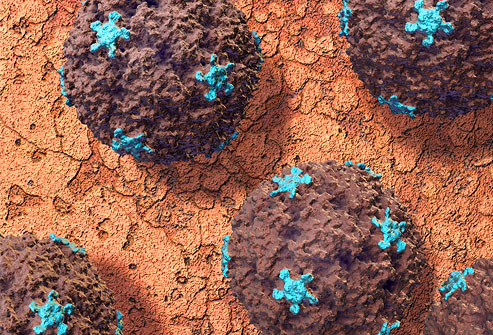
It is not a death-threatening ailment but it is a big source of discomfort caused by headache, fever and fatigue
Common cold, a viral infection involving the nose and throat is the most frequent illness in the world. It is estimated that children in preschool and elementary school could have six to 12 colds per year while adolescents and adults have two to four colds per year.
The disease otherwise known as catarrh and medically referred to as a viral upper respiratory tract infection is a very contagious disease that could be caused by a number of different types of viruses. more than 200 different types of viruses are known to cause common cold, with rhinovirus causing approximately 30 to 35 percent of all adult colds. Other commonly implicated viruses include coronavirus, adenovirus, respiratory syncytial virus, and parainfluenza virus. due to so many different viruses that could cause a cold and because new cold viruses constantly develop, the body never builds up resistance against all of them and it becomes a frequent and recurring problem.
Osas Omorogieva, a medical doctor with Ola Iya Specialist Hospital, Ojuelegba, Lagos, said the symptoms of the common cold typically begin two to three days after acquiring the infection. he explained that the symptoms vary depending on the virus responsible for the infection and might include: nasal stuffiness or drainage, sore or scratchy throat, sneezing, hoarseness, cough, watery eyes, low-grade fever, headache, body aches, and fatigue. “The signs and symptoms of the aliment in infants and children are similar to those seen in adults. The cold may begin with a runny nose with clear nasal discharge, which later may become yellowish or greenish in color. Infants and children may also become more fussy and have decreased appetite. The symptoms of the common cold will typically last anywhere from four to 14 days, with most individuals improving in one week,” he said.
Infection is either by direct contact with infected secretions from contaminated surfaces or by inhaling the airborne virus after individuals sneeze or cough. Person-to-person transmission often occurs when an individual who has a cold blows or touches his nose and then touches someone or something else. “A healthy individual who then makes direct contact with these secretions could subsequently become infected, often after his contaminated hands make contact with their own eyes or nose. A cold virus could live on objects such as pens, books, telephones, computer keyboards, and coffee cups for several hours and can thus be acquired from contact with these objects,” he said.
Common cold which occurs most frequently during the rainy season and harmattan period could occasionally lead to bacterial infections of the middle ear or sinuses, requiring treatment with antibiotics. The cases of swollen glands, severe sinus pain, and a cough that produces mucus might indicate a complication or more serious illness requiring a visit to the doctor.
Though some medical experts are of the opinion that one could get a cold from exposure to cold or overheated weather, studies have shown that there is no connection between common cold and cold temperatures. rather, it is thought that during cold weather people spend more time indoors in close proximity to each other, thus facilitating the spread of the virus. for this same reason, children in day care and school are particularly prone to acquiring the common cold.
However, there are several ways to prevent cold or passing it on to others. Omorogieva said because cold germs on the hands could easily enter the eyes and nose, hands should be kept away from those areas of the body and that if possible, avoid being close to people who have colds. “if you have a cold, avoid being close to people. Whenever you sneeze or cough, cover your nose or mouth, and sneeze or cough into your elbow rather than your hand. Hand washing with soap and water is the simplest and one of the most effective ways to keep from getting cold or giving it to others.
Medical experts claim that there is no cure for the common cold, but one could get relieved from cold symptoms by resting in bed, drinking plenty of fluids, gargling with warm salt water or using throat sprays for a scratchy or sore throat, using petroleum jelly for a raw nose and taking aspirin or acetaminophen.
According to Ayodele Falase, a cardiologist, and former vice chancellor, University of Ibadan, several things, including lack of rest during the period when one has cold symptoms, can disrupt the workings of the heart muscles and subsequently lead to heart problems. “Individuals may not be able to do much about infection of the heart, but if you have cold or cold symptoms, go and rest. if you have cold and you want to jog it out, it could destroy the heart muscles. You need to rest during cold symptoms. when you rest, the heart gets better, the body gets better and then you can go on. these are some of the things that could ensure a healthy heart. Eating a good diet with low cholesterol content, controlling blood pressure, not overeating, weight control and exercising could also help to maintain a healthy heart,” he said.